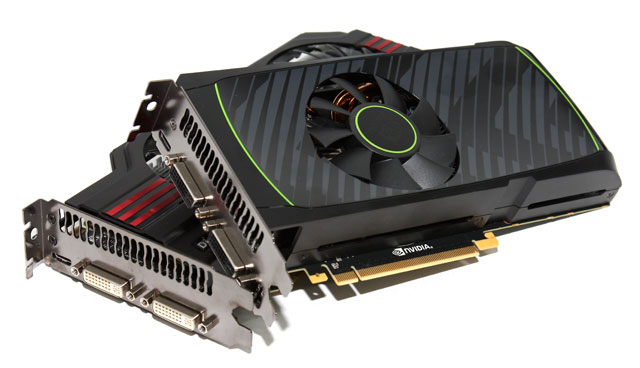Introduction

GeForce GTX 560 Ti SLI gets tested
Before we start, we recommend you to read the reference GTX 560 Ti review first.
Ever since the GeForce GTX 400/500 series we have seen some impressive increases in performance scaling when it comes to Multi-GPU setups, in NVIDIA's case SLI.
In the most high-end segment we do notice some CPU limitation (processor bottleneck) here and there. That means with current generation processors (Sandy Bridge with GTX 580 3-way SLI for example), your GPUs might want to go a little faster, but the CPU is holding them back!
As such it might make more sense to get two products in SLI that are price wise more interesting while in theory the SLI performance should remain close to each other, especially monitor resolutions of 1920x1080 and below.
Now things get even more interesting when you combine two cards that offer nice performance at an affordable price, the GeForce GTX 560 Ti might be a perfect match for SLI in combination with current generation processors.
So let's simply put that to the test, we place the reference GTX 560 Ti from NVIDIA alongside an ASUS GTX 560 Ti, clock both at reference speed and see how well SLI performance behaves.
Now here is the first clue, we see tremendous scaling and while 239 EUR per card is not exactly pocket change money, for roughly 480 EUR you can create a gaming monster with two GeForce GTX 560 Ti cards, easily surpassing a single GTX 580 in most scenarios.
So if your wallet allows it, you can double up that shader count and thus performance with the help of NVIDIA's SLI technology. Multi-GPU gaming surely has grown to become more popular over the past few year thanks mostly to NVIDIA's SLI solutions initially, and obviously later on ATI CrossfireX joined that path as well.
Over the next few pages we'll tell you a bit about multi-GPU gaming, the challenges, the requirements and of course a nice tasty benchmark session. We'll have a peek at temperatures, power consumption and overclocking of the GeForce GTX 560 Ti cards in SLI mode to squeeze out every last ounce of performance.
Have a peek at the products being slammed and spanked today, and then let's startup this article.

